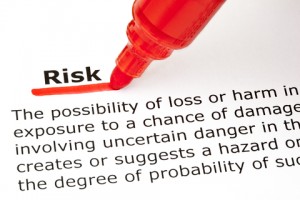 Legionnaires’ disease outbreaks demonstrate the importance of maintaining site safety for the protection of employees and the general public. A dangerous form of pneumonia, legionnaires’ disease is transmitted by inhaling water droplets that contain the bacteria.
Legionnaires’ disease outbreaks demonstrate the importance of maintaining site safety for the protection of employees and the general public. A dangerous form of pneumonia, legionnaires’ disease is transmitted by inhaling water droplets that contain the bacteria.
Typically legionella bacteria thrive in hot water systems, cooling towers or the condensers of air conditioning units. As infected water evaporates into the atmosphere, people in the vicinity could be exposed to the vapour, inhaling the bacteria and becoming infected.
Because water vapour from infected systems is often dispersed far and wide, the implications for public health can be disastrous, particularly where maintenance and cleaning routines have been neglected. Infection rates often run into the hundreds of cases.
Fortunately cases of legionnaires’ disease remain relatively rare in the UK, with only five outbreaks since the disease was first identified in 1976. But there were two outbreaks in 2012 – one in Edinburgh and another in Stoke-on-Trent. Nearly 63 people were infected and four died as a direct result of contracting legionella in both outbreaks. The Edinburgh case is still under investigation by the Health and Safety Executive (HSE).
Even if your business does not use hot water equipment, legionella outbreaks still offer important lessons:
Keeping risk assessments updated
Your business has a duty to maintain standards of health and safety for both employers and the general public. Going further, you should be looking to improve welfare standards and reduce risk at every opportunity.
This means performing regular legionella risk assessments to try and identify new risks and ways by which they may be mitigated. It also means reviewing your current assessments to identify where there are shortfalls or gaps that could be placing people in danger.
Keeping to maintenance schedules
Regardless of the equipment your business uses, it will all need regular inspection and maintenance. Failure to perform maintenance at the correct intervals increases the risk of something going wrong, such as the propagation of legionella bacteria, with serious consequences.
Maintenance schedules should be factored into risk assessments so that they are not neglected or overlooked.
Not just legionella
Because the legionella bacterium develops in poorly maintained water systems, the disease can be eradicated relatively easily. This is also the case with many other industrial diseases or accidents.
The obligation to protect the public is at least as important as working to protect your employees, legally and morally. You may find that your business is perfectly capable at assessing workplace security for employees, but lacks the skills required to consider potential risks to the general public. You may find that securing the services of a health and safety consultant saves your business time, money and reputational damage in the long run.
How does your business currently assess risks to the general public? Is the health and safety of non-employees given equal weighting as that of your team?

A chartered (fellow) safety and risk management practitioner with 20+ years of experience. David provides a healthy dose of how-to articles, advice and guidance to make compliance easier for construction professionals, Architects and the built environment. Get social with David on Twitter and Linkedin.



